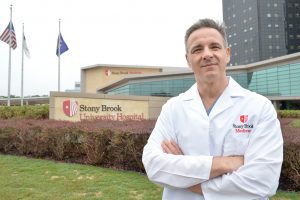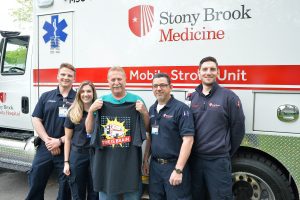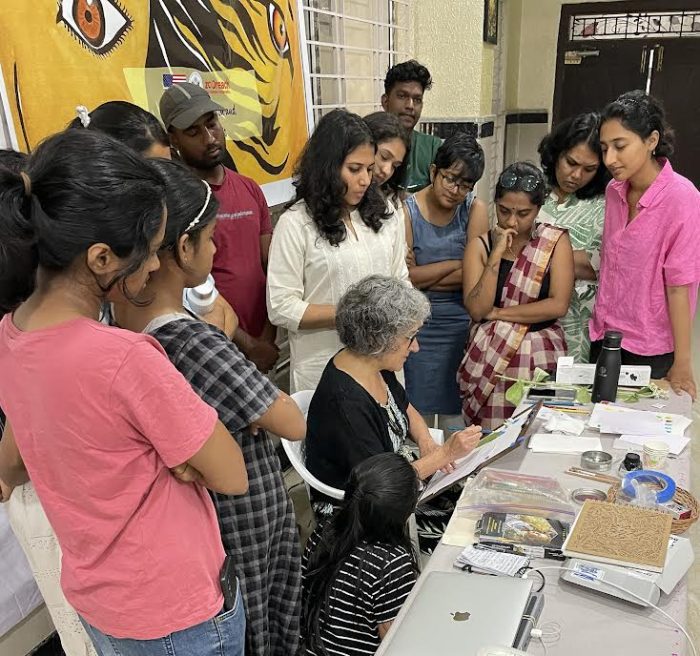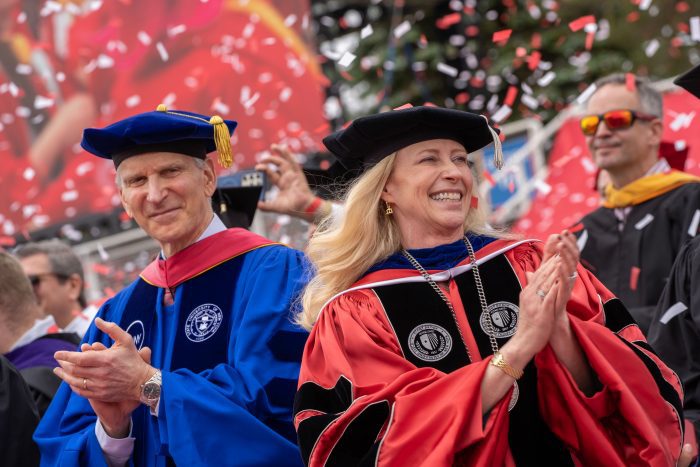By Daniel Dunaief
Concerns about the connection between offshore wind farms and whales strandings are likely just a lot of hot air.

In a recent study published in the journal Conservation Biology, Lesley Thorne, Associate Professor in the School of Marine and Atmospheric Sciences at Stony Brook University, and David Wiley, Research Coordinator for NOAA’s Stellwagen Bank National Marine Sanctuary, pointed to vessel strikes as an important driver of the increase in humpback whale strandings.
To address concerns about whether the development of offshore wind farms led to the death of these cetaceans, Thorne and Wiley compared the distribution and timing of humpbacks between 1995 and 2022 relative to anthropogenic factors, such as vessel strikes and entanglement in fishing gear, as well as elements associated with wind farm development.
“We know that there is a narrative out there suggesting that the surveys used for site assessment and characterization are factors” in these whale strandings, said Thorne. “Studying strandings, mortalities and injuries of large whales is important as it can provide information” about the relative impact of different threats.
The researchers found that New York and Virginia were hotspots of mortalities and serious injuries, with a subset of strandings confirming that vessel strikes were the cause of serious injuries or death.
A number of parts likely played a role. Beginning in 2016, vessel traffic in New York and New Jersey increased at the same time that observers noticed an increase in humpback whales.
These whales have also expanded into new foraging areas in recent years, regularly using inshore New York waters as a foraging ground starting around 2011.
The increase in the population of menhaden, which are a fatty, energy-rich forage fish, in the mid 2010s also expanded humpback whale feeding ground.
Menhaden tend to form dense surface schools in shallow coastal waters in mid-Atlantic states such as New York. These cetaceans often use surface foraging behavior to feed on menhaden, which could make them more vulnerable to vessel strikes.
Understanding and appreciating the causes of these strandings could lead to informed decision-making, in developing offshore wind farms and in creating responsible regulations for various vessels around the time whales might be foraging.
Wind farm activity
During the time these scientists studied humpback whale strandings, seven wind turbines were constructed and then operational.
Looking at humpback strandings, the highest number of strandings in Rhode Island and neighboring states during the unusual mortality event occurred in years following construction, including 2017 and 2022, and not in the year when construction occurred.
In Virginia, the highest number happened years before construction.
Their assessment of these patterns did not suggest a link between strandings and site assessment and characterization surveys for offshore wind development. Survey authorizations increased over the course of the unusual mortality events and primarily occurred between New Jersey and Massachusetts, whereas elevated patterns of strandings did not follow this pattern.
In the year 2016, Massachusetts had one survey authorization related to offshore wind. Massachusetts, however, showed a lower number of strandings relative to other years, while the area from North Carolina to Rhode Island had higher strandings.
Thorne and Wiley are not involved in the stranding response. They used the data from the National Marine Mammal Strandings Database, which provides standardized data on marine mammals strandings collected by strandings responders.
They studied changes in the location and timing of humpback whale strandings, and of humpback whale mortalities and serious injuries that were caused by vessel strikes and entanglements.
To be sure, Thorne emphasized that their study focused on humpback whales, which are the species that strand most frequently. Other large whale species have different distributions, foraging and habitat preferences, which clouds the picture for any broader analysis.
Vessel strikes
The biggest increases in strandings occurred from Rhode Island to Virginia.
In the waters near New York and Virginia, strandings had some of the highest increases. Stranding responders confirmed the prominent role of vessel strikes in mortalities and serious injuries near these states.
As for the whales, they have also changed their spring and summer feeding ranges. Until more recently, the southern feeding range extended much further north, to the Gulf of Maine as well as areas farther north, such as Iceland and Greenland.
While humpbacks have foraged in New York waters periodically in the past, they have been consistently feeding in these waters during the summer since 2011.
The whales are following one of their food sources, as the population of menhaden has increased off the south shore of Long Island and in other mid Atlantic states.
Juveniles have also used the waters off the coast of Virginia as a supplemental feeding ground.
“We know that vessel strikes, along with entanglement in fishing gear, are the major threats to large whales around the world,” said Thorne.
When boats are moving more rapidly and whales are feeding in regions with a higher density of vessel traffic, such mortality events are more likely.
Possible solutions
For starters, the scientists urge further study to add to the body of research, including a more thorough understanding of the movements and habitat use of humpbacks and other large whales.
Additionally, assessing the abundance and distribution of prey species will contribute to an understanding of habitat use and the health of large whales.
She also suggested further work to analyze feeding and feeding in shallow coastal habitats with the risk of vessel strikes.
Slowing ships down reduces the risk from a vessel strike.
“There’s a lot of interest in how we can better use dynamic management instead of management that is focused on fixed areas and times,” said Thorne.






















